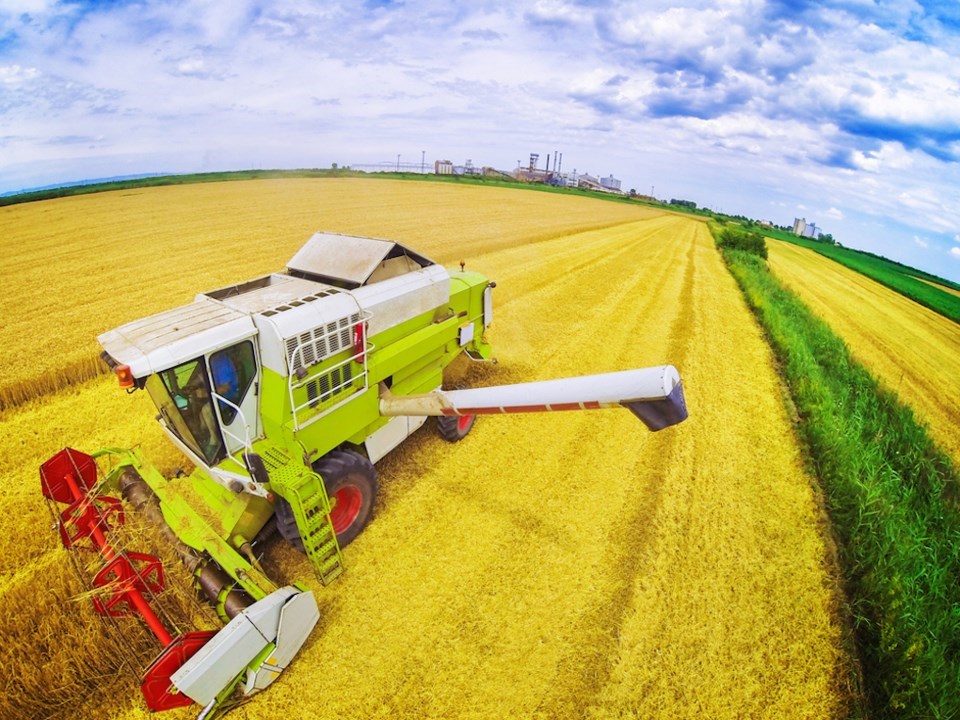Saskatchewan saw the greatest increase in farmland values last year as demand outstripped supply on the back of strong commodity prices.
“There appears to be very strong demand still, I think that speaks to the positive long-term outlook for ag,” J.P. Gervais, vice-president and chief economist with Farm Credit Canada, said in a media briefing regarding the federal lender’s annual survey of farmland values across the country.
This drove a 12.8 per cent increase in the value of farmland nationwide, with Saskatchewan leading the West with a 14.2 per cent increase. Manitoba ranked second with an 11.2 per cent increase followed by Alberta at 10 per cent and B.C. trailing at 8 per cent.
Values in Saskatchewan peaked last year at $8,000 an acre for irrigated cropland in the western portion of the province, with cropland generally running between $2,200 and $3,000 an acre on average. Manitoba saw irrigated cropland max out at $12,800 while southern Alberta saw irrigated land peak at $20,200 an acre.
“We’ve seen margins being positive, even above the five year average for most operations, and I think that speaks to the demand that’s been very strong for farmland,” Gervais said, pointing to Saskatchewan in particular. “Demand remains very strong because we see a long-term outlook that’s very positive for the industry.”
While the 2021 grain and oilseed crop was a drag on gross revenues due to severe drought, Gervais said all signs point to the 2022 and 2023 marketing years buoying gross revenues and in turn investment in farmland. While canola prices are down slightly as 2023 begins, the effect should be minimal.
“Given that in 2023 we’re not going to have the drag of the ’21 crop on receipts, I’m projecting an increase in the Prairies,” he said.
The rise in prices is partly driven by a lack of supply. A decline in farmed land between 2011 and 2021 has resulted in less land being farmed, and less of the land that is farmed being offered for sale.
“All the data that we collected weighed out to a very, very tight supply of farmland for sale, and the number of transactions in our database is actually a little bit lower than it has been,” Gervais said. “Demand is still strong and supply is limited, and that results in the increase.”
Prices may be nearing their peak, however.
The sharp rise in interest rates last year saw many buyers hit the brakes, especially in the most expensive regions.
B.C. has the highest farmland values in Canada, maxing out last year at $250,000 an acre in the Fraser Valley and $115,100 an acre on Vancouver Island. But following a 6.5 per cent increase in farmland values during the first half of the year, the cumulative total was just 8 per cent.
Saskatchewan saw steadier momentum, with a gain of 8.4 per cent in the first half of the year before notching another six percentage points in the latter half of the year.
“I don’t think it’s just about interest rates having reached their peak,” Gervais said of market activity. “Let’s face it, farmland, when it’s evaluated against farm income and accounting for interest rates, … in most provinces, if not all provinces, we’re getting very near to the top of the market.”
Gervais expects the pace of farmland increases to slow this year, but much depends on whether buyers can find the properties they want.
“I made that same comment a year ago, and I was wrong,” Gervais said of the pause in appreciation. “I’m not going to underestimate the impact on the supply side.”
FCC bases its survey of farmland values on a portfolio of benchmark properties combined with sales data reflecting the middle 90 per cent of sales in the subject year. FCC says the range removes outlier values to keep the range reflective of typical sale prices.



